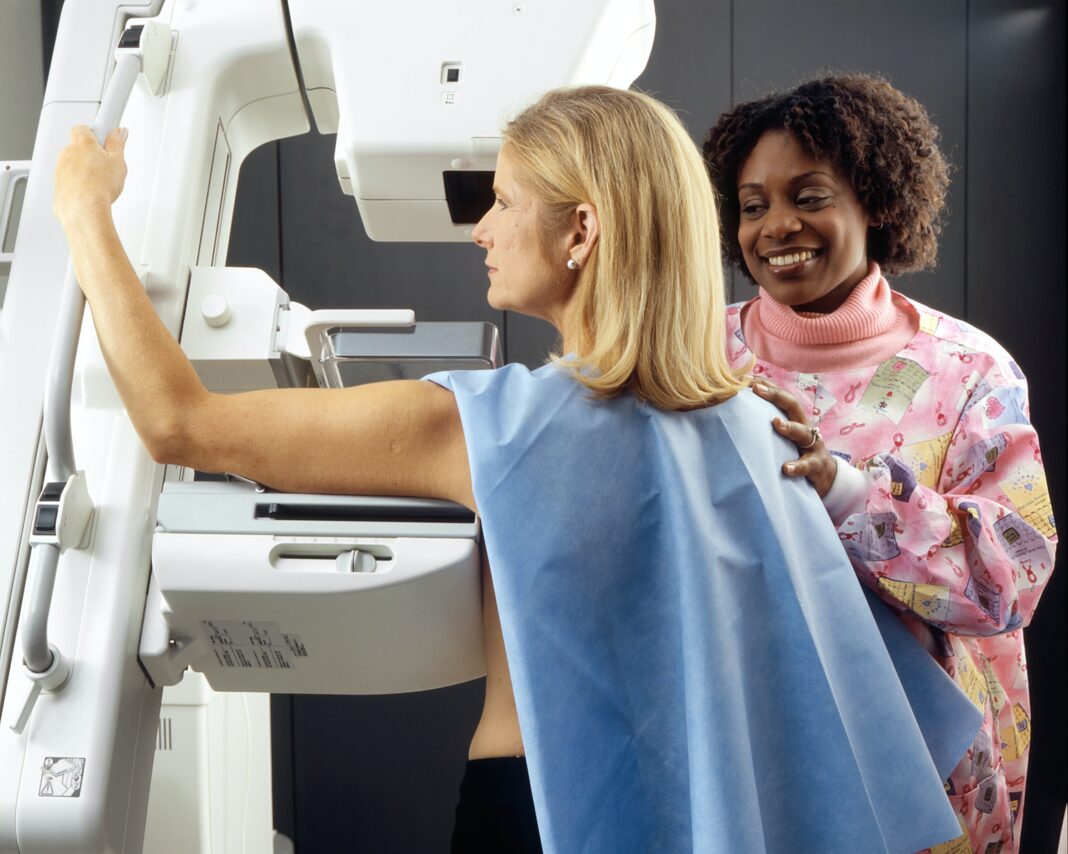A woman’s breast is composed of three types of tissue, namely fatty tissue, fibrous tissue, and glandular tissue. First, add to the size and shape of the breast. the fibrous tissue secures the breast in its place, whereas the glandular tissue forms lobes that secrete milk. Breast density refers to the amount of glandular and fibrous tissue in the breasts of a woman, compared with the amount of fatty tissue. Mammography helps in determining breast density using low-energy X-rays; it assesses the human breast for screening and diagnosis of diseases, typically cancer.
The U.S. Preventive Services Task Force requires an average woman aged between 50 and 74 years old to undergo mammography every two years. This is because the breast cancer risk is highest for women in their 60s and screening mammography reasonably prevails over the problems for this age group. An original investigation published in JAMA Network Open gathered the opinions of women about the risk of breast cancer related to breast density. It also explored how the women intended to lessen their risk. Earlier studies indicated that women with dense breasts are more likely to get breast cancer. The dense the breasts are, the greater the chance to develop the pathology.
Led by Laura B. Beidler, this qualitative research used semi-structured interviews that comprise a short list of guiding queries, and telephone surveys to explore opinions about breast cancer risk among women representing the nationwide population.
Participants were between 40 and 76 years old and had recently undertaken mammography. Moreover, these women had previously heard of breast density and did not have a history of breast cancer. The survey was conducted from the 1st of July 2019, to April 30th, 2020, and a total of 2306 women completed it. Beidler and collaborators also interviewed survey participants who knew about their personal breast density.
Breast cancer associated with breast density was also compared with five additional risk factors. Women were also asked to define what they assumed could contribute to developing the disease and strategies to avoid it. This revised part of the analysis included 1858 of the 2306 women. Half of them pointed out breast density as a superior risk of breast cancer than not having children. Even so, most women believed breast density was a lower risk than the presence of a first-degree relative who had this type of cancer.
Sixty-one women responded to the interview. Six of them stated that their breast density contributed to breast cancer, whereas the big majority – 43 women- underlined family history as a major risk factor. Additionally, seventeen interviewees were unaware if they could lessen their breast cancer risk.
The results showed, in conclusion, that most interviewees failed to recognize breast density as a breast cancer risk factor and were not assured about the activities to lessen the risk. Thus, Beidler and collaborators emphasize the need for all-inclusive teaching about breast cancer risks and prevention approaches.
References
Beidler, L. B., Kressin, N. R., Wormwood, J. B., Battaglia, T. A., Slanetz, P. J., & Gunn, C. M. (2023). Perceptions of Breast Cancer Risks Among Women Receiving Mammograph Screening. JAMA Network Open, 6(1), e2252209-e2252209. doi:10.1001/jamanetworkopen.2022.52209
Chalfant, J. S., & Hoyt, A. C. (2022). Breast Density: Current Knowledge, Assessment Methods, and Clinical Implications. Journal of Breast Imaging, 4(4), 357-370. https://doi.org/10.1093/jbi/wbac028
Qin, X., Tangka, F. K., Guy, G. P., & Howard, D. H. (2017). Mammography rates after the 2009 revision to the United States Preventive Services Task Force breast cancer screening recommendation. Cancer Causes & Control, 28, 41-48. https://doi.org/10.1007/s10552-016-0835-1
Sardanelli, F., Fallenberg, E. M., Clauser, P., Trimboli, R. M., Camps-Herrero, J., Helbich, T. H., & Forrai, G. (2017). Mammography: an update of the EUSOBI recommendations on information for women. Insights into imaging, 8(1), 11-18. https://doi.org/10.1007/s13244-016-0531-4
Seely, J. M., Peddle, S. E., Yang, H., Chiarelli, A. M., McCallum, M., Narasimhan, G., … & Berg, W. A. (2022). Breast density and risk of interval cancers: The effect of annual versus biennial screening mammography policies in Canada. Canadian Association of Radiologists Journal, 73(1), 90-100. https://doi.org/10.1177/08465371211027958
Image credit: National Cancer Institute in Unsplash





